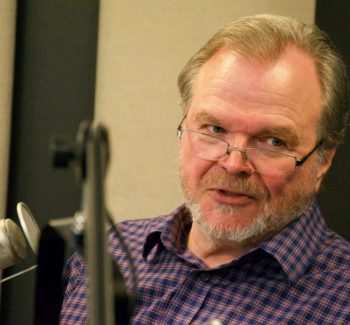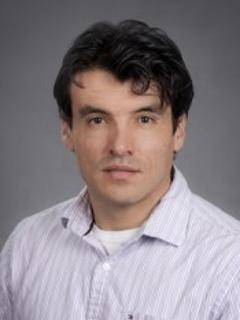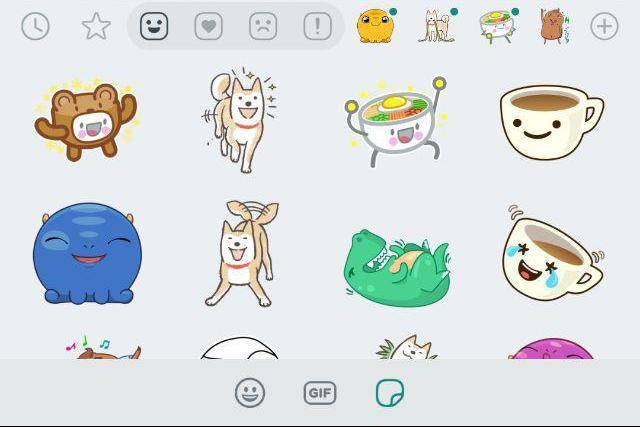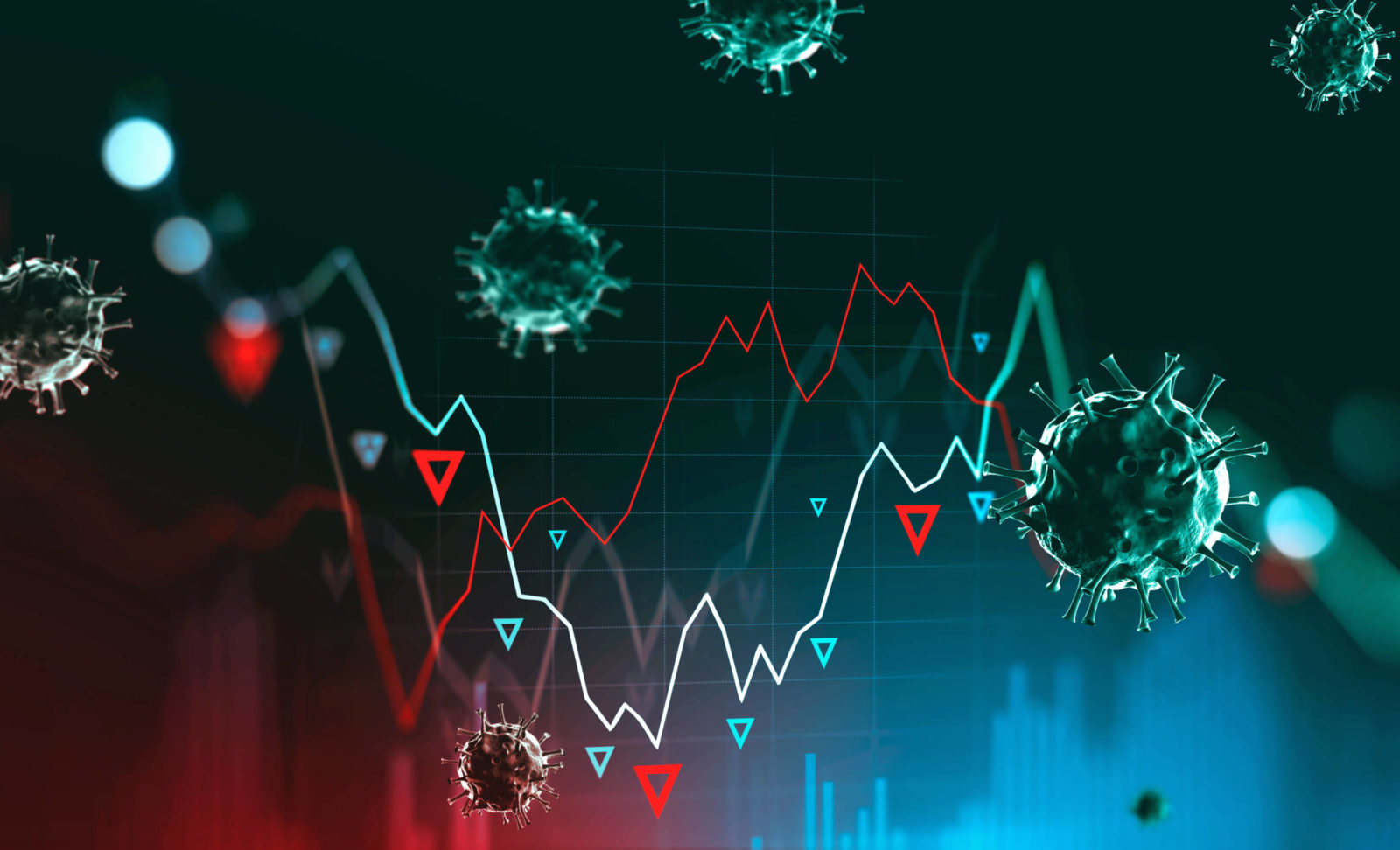COVID-19: When 900 Bytes Shut Down the World
In the podcast “COVID-19: How 900 bytes changed the world,” Walter Bradley Center director Robert J. Marks and Dr. Daniel Andrés Díaz-Pachón explore a dreadful truth: “Human biology is so finely tuned that less than a kilobyte of information can stop the world”, for example when embodied in an easily spread virus like COVID-19. Along the way they look at what we know about DNA and the nature of information. Díaz-Pachón is a Research Assistant Professor in the Division of Biostatistics at the University of Miami and a Senior Researcher at the Evolutionary Informatics Lab.
A partial transcript follows.
02:46 | A review of DNA

Robert J. Marks (right): Daniel, everybody knows about DNA, which is the carrier of the genetic information for life. Let me review it very quickly: There’s four nucleotides, A, C, G, and T. They’re also referred to as base pairs. If you stretched out DNA, it’s about six feet long [approximately two metres]. It has over three billion nucleotides in it.
You would think that the more complicated the life form, the more nucleotides it would have. But the marbled lungfish has a genome that contains 133 billion base pairs, compared to only 3 billion for a human being.
Note: A, C, G, and T are the four types of bases found in a DNA molecule: adenine (A), cytosine (C), guanine (G), and thymine (T). A DNA molecule consists of two strands wound around each other, with each strand held together by bonds between the bases. Adenine pairs with thymine, and cytosine pairs with guanine. The sequence of bases in a portion of a DNA molecule, called a gene, carries the instructions needed to assemble a protein. – National Human Genome Research Institute
Robert J. Marks: Now, each base pair is equivalent to two bits of information. A byte is 8 bits and a kilobyte is 1000 bytes. The term “bit” was first used in a 1948 paper by Claude Shannon; it’s the foundation of Shannon information theory.
Dr. Diaz, you point out that a small amount of information can make a big change and that’s the case with the COVID-19 virus. Would you elaborate on that a little bit?
04:03 | A small amount of information can make a big change

Daniel Andrés Díaz-Pachón (left): A nuclear bomb can be made to explode just by giving an Enter on a keyboard or something like that. That’s a lot of energy moved through a small amount of information. That’s really an extreme example but a second example is how a small bit of knowledge can produce high value for people who acquire it. For instance, if the central bank is going to change its interest rates and for some reason that information is known to a few people outside, they can produce or move a lot of money with just that small amount of information. They can get rich, basically, in one day.
Robert J. Marks: Well, that’s the reason that the SEC is monitoring inside information! There’s been a number of congressmen that have been targeted and fingered for performing information that they get from classified meetings.
You talk about the nuclear response. The President of the United States carries around—well, he has a secret service guy that carries it around—the so-called nuclear football. He just has to enter a little bit of information to start a thermonuclear strike against whoever he wants to.
08:03 | Coronavirus and information change
Robert J. Marks: But how does a small information change relate to the coronavirus?
Daniel Andrés Díaz-Pachón: There are only 30,000 base pairs of information in the RNA that coronavirus has. That is equivalent to 60,000 bits or 7.5 kilobytes.
Robert J. Marks: So you’re saying that humans have 3 billion base pairs and the coronavirus has only 30,000 base pairs. So they’re very small.
Daniel Andrés Díaz-Pachón: When we compare the thirty thousand base pairs, which is 60,000 bits, that’s a very small amount of information compared with most things we do in a computer. Comparing it to regular chat conversation, if you use What’s App?, 7.5 kilobytes is just the size of a sticker (a small image that is sent in the conversation [pictured below]).

Robert J. Marks: Yes, I did something before our broadcast. I wanted to get an image which was about 10 kilobytes and I ended up with a 10 [pixel] × 10 [pixel] square of totally black pixels. And that, compressed by a .jpeg algorithm, was only 10 kilobytes. Ten kilobytes is nothing!
10:11 | The different kinds of coronaviruses
Robert J. Marks: There’s a bunch of coronaviruses and this one deviates from another coronavirus by just a little bit.
Daniel Andrés Díaz-Pachón: Yes. The easiest type of mutation found for other coronaviruses coming from bats in China has been about 88% similarity so what mutated was about 12%. And that 12% corresponds to about 0.9 kilobytes or 7.2 kilobits.
Robert J. Marks: Okay, we can talk about that as 900 bytes actually. Which is really nothing if you think of a 10 × 10 black square, like a sticker at WhatsApp. Now, this 900 bytes of information, as everybody knows, shut down the world economically. But you mentioned that there are other interesting side effects to this 900 bytes that has launched the great epidemic, this pandemic, across the world. What are some of those?
Note: First described in detail in the 1960s, the coronavirus gets its name from a distinctive corona or ‘crown’ of sugary-proteins that projects from the envelope surrounding the particle. Encoding the virus’s make-up is the longest genome of any RNA-based virus – a single strand of nucleic acid roughly 26,000 to 32,000 bases long. ScienceAlert
11:05 | Effects on air quality
Daniel Andrés Díaz-Pachón: Again, it’s interesting to see how a small amount of information can move the whole world, can move energy and matter. A colleague and I went to look at EPA information about what the most polluted cities in the US, Los Angeles and New York City. And we found, actually, that for the past forty years, this particular time in which the population has been locked down is the first time showing a healthy air quality in those cities. That’s quite amazing, I think. These cities have had strong policies trying to enforce changes. You can see how these policies have affected the quality of the air in the past two decades. But nothing compares to what has happened in the past two months. It is amazing.
12:43 | Other impacts of coronavirus
Robert J. Marks: There’s additional impact besides this, some of which I think we already know.
Daniel Andrés Díaz-Pachón: There is a rise in unemployment claims that we have not seen in the history of the US. If you look at the data from the Department of Labor, here in the country it is skyrocketing right now. And that is, again, only produced by this 7.2 kilobytes, which is really, really amazing…
15:05 | The fundamental importance of information
Robert J. Marks: We read about the fine-tuning of the universe but there’s really fine-tuning of the biology of the ecosystem, economics, etc., as well. That is a little bit scary. So what is your takeaway from all of this?
Daniel Andrés Díaz-Pachón: I really think that information is more fundamental to nature than matter and energy and what we are seeing here is how this small amount of information can produce a big change. Not only in a small area; it’s the whole world that is paralyzed…
There is a primacy of information, as some physicists have said in the past. It’s the idea that information come before matter and that it is the primary stuff of the universe. That does not prove that information is generating matter or energy but what it shows is how a small amount of information can produce a big change in a lot of things that we know.
Note: The phrase “it from bit” was coined by theoretical physicist John Archibald Wheeler (1911–2008) to express the idea that “quantum information is the foundation of all reality,” according to his biographer, physicist Kip S. Thorne
Further reading on information in life forms: The brain exceeds the most powerful computers in efficiency Human thinking takes vastly less computational effort to arrive at the same conclusions. (Eric Holloway)
See also: COVID-19: Getting to the bottom of what happened in China. China knowing violated the terms of a World Health Organization (WHO) disclosure agreement. It is widely recognized that medical professionals and journalists in China are being silenced if they publish any information about COVID-19 that contradicts the ruling Chinese Communist Party’s official narrative. But now mainland Chinese scientists must ensure that their research publications also toe the CCP party line. If we sift carefully, however, we can uncover real information.
Show Notes
- 01:09 | Introducing Dr. Daniel Andrés Díaz-Pachón, Research Assistant Professor in the Division of Biostatistics at the University of Miami and Senior Researcher at the Evolutionary Informatics Lab
- 02:46 | A review of DNA
- 04:03 | A small amount of information can make a big change
- 08:03 | Coronavirus and information change
- 10:11 | The different kinds of coronaviruses
- 11:05 | Effects on air quality
- 12:43 | Other impacts of coronavirus
- 15:05 | The fundamental importance of information
Additional Resources
- Daniel Andrés Díaz-Pachón at the University of Miami
- Shannon information theory at Wikipedia
- U.S. Securities and Exchange Commission (SEC)
